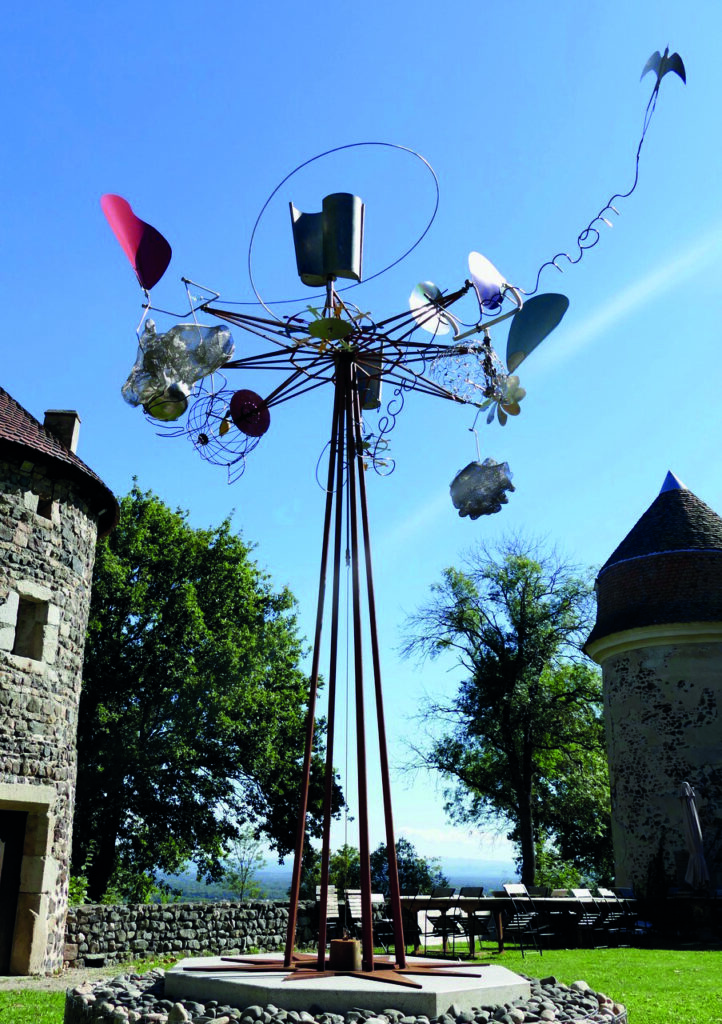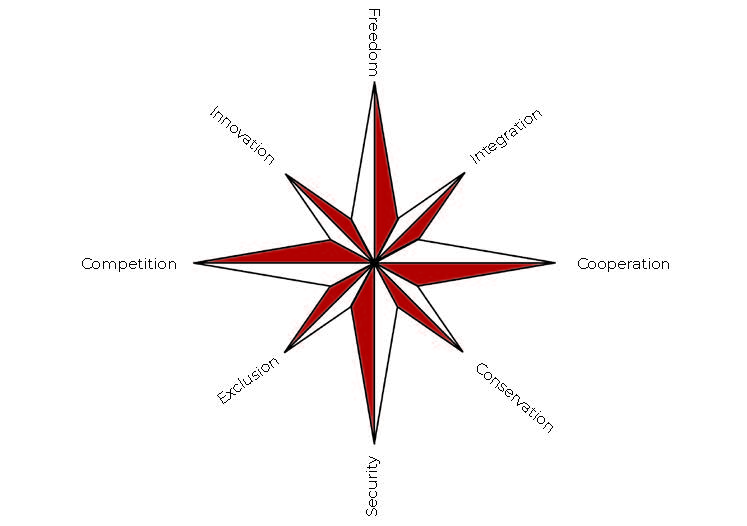POST SCRIPTUM
A “COMPASS OF POSSIBILITIES”
If the global community is grounded on anticipating narratives, rather than on the memory of a common past, the disaster-narrative steers energies as much as the programmatic-narrative standardizes societies, be it a narrative of the Total market, Total digital or the World-empires. By opening up to diversity while focusing on the ecological vision of Mother Earth, the emerging global community can instead give life to a more mobilizing and at the same time solidarity-based and pluralist narrative, capable of replacing dehumanizing globalization with appeased mondialité (mondiality). Inspired by the “archipelagic” thinking of the Antillean writers (Édouard Glissant and Patrick Chamoiseau), the adventure-narrative of Mondialité appears as a politics of solidarities and a poetics of differences. Close to the “ordered pluralism” that recalls the European motto (“United in diversity”), this is the only anticipating narrative that is concerned at the same time with preserving a habitable planet and respecting the rights of the approximately eleven billion human beings expected for the end of the century. It is perhaps the only narrative capable of resisting the World-empires without reaching the already announced collapse. Finally, perhaps it is the only narrative that, with a little luck, can lead us to a global community united in its destiny while remaining open to the plurality of possible worlds.
To illustrate this narrative, we imagined, through the joint endeavour of a jurist and an artist – Antonio Benincà – a “compass of possibilities”, conceived as an “object manifesto” (Fig. 1).

A Wind Rose (Fig. 2) anchored to the ground, enabling us to detect the winds of globalization: the main winds – security, competition, freedom, and cooperation – and the winds between the winds (vents d’entre les vents) – i.e., exclusion, innovation, integration, conservation. Projected towards the sky, the terrestrial Rose becomes an aerial Round, a sort of carousel or great disorder where the opposing winds collide two by two (freedom/security, cooperation/competition, etc.).

at the base of the “Boussole des possibles” ‘Compass of Possibilities’), an object-manifesto
materalialized by Antonio Benincà. It illustrates the “winds of globalization” composed
by the main winds: security, competition, freedom and cooperation; and the “winds
between the winds” (vents d’entre les vents) resulting from the intersection between the
main winds, such as: exclusion, innovation, integration and conservation.
Unusual, because it does not have the North magnetic pole, this compass presents a center of attraction where the regulatory principles of our humanities meet. These principles of justice are inspired by a spiral of the humanisms winding up towards the sky, offering a pedestal to the “little innominate breath” (petit souffle innomé) that represents the vital impulse of every citizen of the world (Delmas-Marty 2016, p. 127). Symbol of the permanence of Being in evolution, the spiral reactivates the humanism of relation of traditional societies (the principles of fraternity and hospitality) without renouncing the humanism of emancipation that we inherited from the Age of Enlightenment (equality and dignity). The spiral also embraces the humanism of interdependence, born from ecosystems (social and ecological solidarity) and lastly the humanism of indeterminacy, which preserves the mystery of the human (responsibility and creativity). The spiral is linked to a plumb line, like the one that the constructors of cathedrals used to immerse in a bucket full of water, the primordial element of life, to find literal and metaphorical rectitude by cushioning the movements resulting from the winds.
If we play the game of analogy between the winds of the world and the winds of the spirit, the lead wire, immersed in an octagonal receptacle of water, evokes a global governance in which – paying homage to Blaise Pascal – justice will be reinforced by legal humanisms and might will be balanced by regulatory principles“1[…] being unable to cause might to obey justice, men have made it just to obey might. Unable to strengthen justice, they have justified might; so that the just and the strong should unite, and there should be peace, which is the sovereign good” (Pascal 1669; English translation 2007).. This unique compass – which does not have the North magnetic pole – suggests that collapse is not inevitable and that it is still possible to steer our societies towards governance that stabilizes without immobilizing and pacifies without standardizing.
This 21st century, in which we only talk about the suicide of the West, the disintegration of Europe and the collapse of the planet, is the ultimate time to launch an alert. This is not the reason, however, to give up on hope now. The compass is not just a sculpture and a manifesto, it is also playful: even in a state of emergency, it is vital that joy remains!


